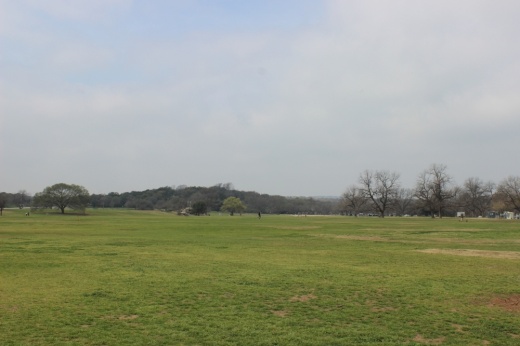“Moving forward, [Austin Parks and Recreation] will rely more heavily on bond funding to keep up with Austin’s desired level of park service or watch our park level of service plummet in a rapidly densifying city, changing the nature of Austin itself," parkland acquisition planner Robynne Heymans told City Council in September.
The setup
Parkland expansion in Austin is typically funded through one of two main sources. Voter-approved bonds have provided tens of millions of dollars for buying up land to serve as new parks, trails and greenbelts over the past several decades. Additionally, the city's parkland dedication system has required housing developers to offset the impact of new residents by contributing either land or fees for future recreational spaces as new construction takes place.
But dollars from past bonds are almost gone, with $31 million of $45 million approved for acquisitions in 2018 already spent and the city in active negotiations for land with the remaining amount. And Austin's ability to bring in parkland dedication payments has taken a significant hit after Texas lawmakers passed House Bill 1526 two years ago. That legislation limits cities' ability to require green space contributions from developers, a change that's left an uncertain outlook for parks growth in line with Austin's rising population.
"As it turns out, we relied too heavily on our parkland dedication fees," said Amanda Masino, a biology professor and director of environmental justice at Huston-Tillotson University and volunteer with the Evergreen Austin nonprofit.
The city's long-range parks plan calls for all Austinites to live within walking distance of public green space, a goal that lines up with a standard of 24 acres of parkland per 1,000 residents. But Austin hasn't met that mark since the mid-2000s and currently sits at a service level of 18.47 acres of green space per person. Parks department representatives expect that to fall off even further under the tightened dedication rules.
"At best, the new state legislative parkland dedication ordinance meets about 12% of that 24 acre-per-1,000 [residents] goal, with 3 acres per 1,000 people in a suburban area. But downtown, that percentage plummets to just 0.3% of our goal with just 1,000 people crammed into an area less than a tenth of an acre," Heymans said. "For reference, that's 1,000 people crammed into the footprint of Jo's Coffee on South Congress."

The approach
Randy Scott, the parks department's land use and acquisition manager, said parkland dedication fees going forward will be "insufficient" to buy up the land needed for Austin's almost 1 million residents and counting.
Previously, every $1 of bond funding was matched with $0.33 in fees. Those were also sent to the city during developments' planning stage, allowing Austin to ready new parks before residents moved in. Now under HB 1526, the city can't collect fees until a building receives its certificate of occupancy, pushing back the timeline for green space investments.
“What it did was take the burden of acquiring parkland to meet population growth and shift it from the new residents that are moving here at a greater burden to the existing residents here, which means relying heavily on bond packages for land acquisition much more than in the past," Scott said.
That change is expected to result in a short-term funding gap of up to $20 million over the next five years as fee collections lag. Heymans and others said Austin should now include as much as $100 million or more for new acquisitions in the anticipated 2026 bond package to buy up the property needed to support the growing city.
Bond funds could quickly be rolled out so Austin can target future greenbelts, neighborhood green areas and "destination" civic parks. Maintaining those spaces until they're ready for the public would be far less costly than waiting years to buy them up—a difference of hundreds of dollars per year versus hundreds of thousands in land appreciation, according to parks staff.
"Over the course of 10 years, we are saving the public millions per park in public acquisition funds by prioritizing purchasing land today and keeping the land for passive recreation, rather than delaying the parkland investment for the future," Heymans said.
It remains to be seen how many new bond dollars will be reserved for parkland expansions given the competing priorities across city departments, and the package's overall cost to taxpayers. Funding could also come in the form of new special event and utility charges to support parks maintenance and growth.
Priority areas for parks additions, including a new recreation center for Southeast Austin, have already been identified and could guide future bond investments. According to Heymans, every $100 million of new acquisition funds would serve up to 10% more of the city's population by adding:
- 60 acres of destination parks
- 60 acres of pocket or neighborhood parks
- More than 200 acres of greenbelts






